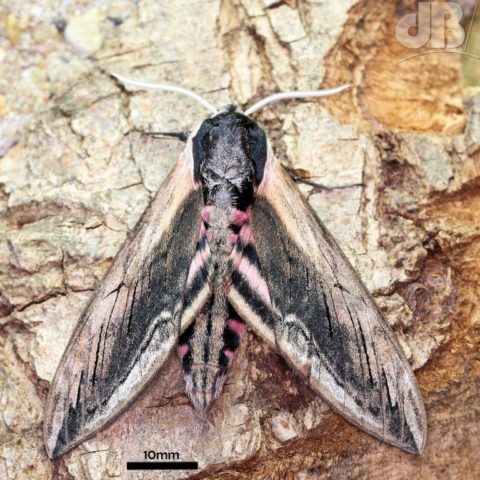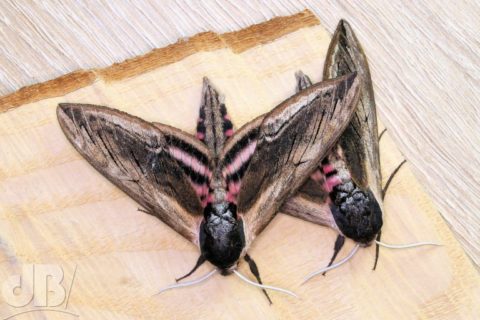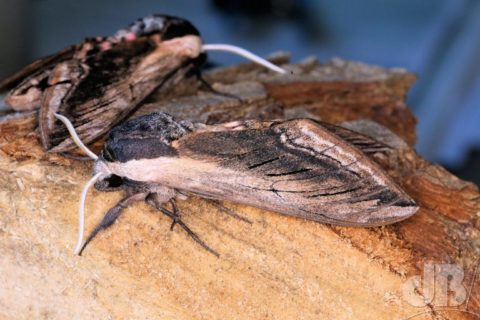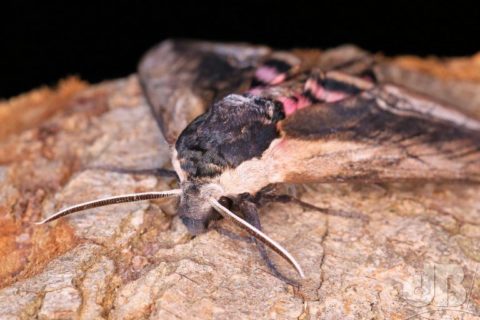It’s always a delight to spot a big lep in the scientific trap when you approach it each morning. This morning’s treat was a Privet Hawk-moth (Sphinx ligustri), but once I’d lifted the lid I realised there were two. This is a big moth (55 mm from the nose to wing-tip, with startling pink and black markings on its body and hindwings, which are revealed when it opens its wings.

This is the largest resident moth species in the British Isles. It flies June to July in a single breeding season. I had previously seen and phone-photographed a pair roosting on a concrete bollard in the village (14 Jun 2019, 21h20, Wilkin Walk, Cottenham, to be precise). But, not seen any since.


In repose, the Privet Hawk-moth is, like many other species, well camouflaged against natural backgrounds, such as leaves and bark. Its startling colours when it opens its wings are presumably an anti-predator adaptation like those of many other species, but not latching on to the “eyes or face” type of the Eyed Hawk-moth or the Emperor Moth. Black and pink stripes are more likely to be perceived as venomous or otherwise poisoning, bad-tasting, or stinging.
